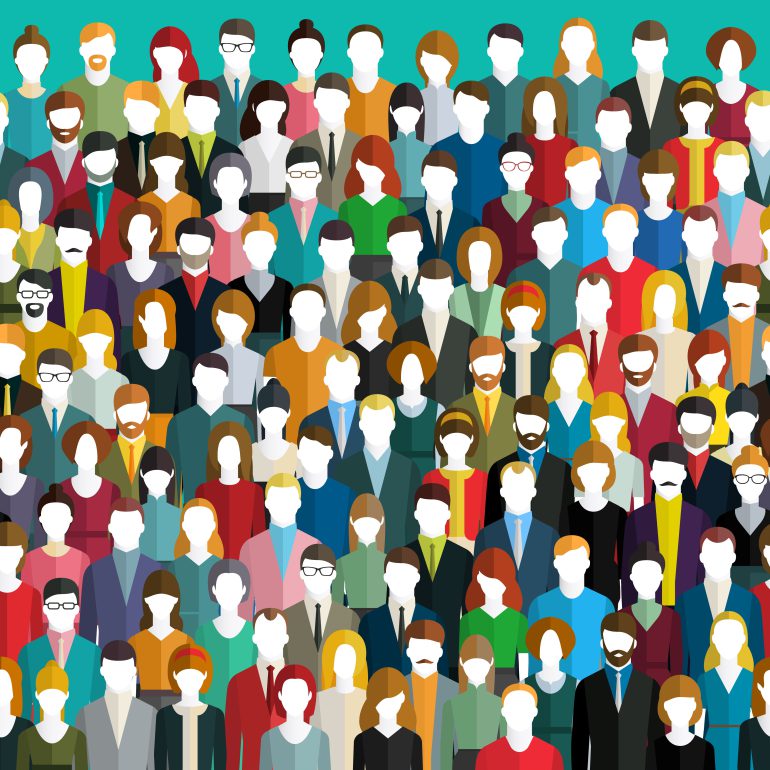In 2023, the Netherlands was ranked the fifth-happiest country in the world. However, happiness comes at a price. Last month the national committee on demographic growth issued a warning to Dutch parliament advising politicians that if they do not intervene, the country’s population could exceed 22 or 23 million by the year 2050. According to the committee, a population of that size is not sustainable and “there are measures that need to be taken, and certainly doable”.
History of immigration
Throughout history, the Netherlands has struggled with its demographic size. In the seventeenth century, the Dutch Republic was a densely populated region in Europe and touted 2 million inhabitants. Many of its residents were refugees either fleeing the Southern Netherlands (today Belgium) during the Eighty Years’ War (1568-1648), or from German territories, where the Thirty Years’ War (1618-1648) was fought, and entire regions were pillaged and plundered, leaving inhabitants no other option than to flee. Much of the wealth in the Dutch ‘golden age’ was due to immigrants who fueled the country’s economic growth. Throughout history, the Netherlands has been a country of that welcomed immigrants. Until 1800, the country maintained a stable population of around 2 million. By the end of the nineteenth century, it grew to 5 million, which skyrocketed to 16 million by the end of the twentieth century.
Richard van Zwol, who headed the national demographic growth commission, emphasizes that not all prognoses come true. However, that does not imply lawmakers should not implement measures. Van Zwol also states that the demographic prognosis for 2050 is announced in a volatile period, only two months after the national elections, while a coalition government is still being negotiated. In the past, the country’s population density has been a bone of political contention. For some right-wing political leaders, immigration has been easy prey in gaining populist votes. In February 2002, three months before he was murdered, Pim Fortuyn unleashed a media frenzy after he pointed out in a newspaper interview that each year the Netherlands accepted 40,000 political refugees, which after four years amounted to a city the size of Groningen. Politicians in the left and middle of the spectrum generally veer away from addressing population growth and restricting immigration. It’s a sensitive subject, and there are legitimate and humanitarian motives for accepting refugees. Since the Russian invasion of the Ukraine in 2022, the Netherlands has accepted more than 106,000 refugees from that country, and has also housed about 150,000 Syrian refugees, many of whom crossed the Aegean Sea in rickety boats. For them, remaining in their homeland is not an option.
While many politicians and Dutch citizens believe they have a civic duty to absorb refugees from troubled areas of the world, the report at the same time argues that if the country continues to accept more refugees, the country risks becoming overburdened and will not be able to provide services for the influx of newcomers. However, stopping immigration completely is also not an option, as the Dutch population is ageing and young immigrants are important to maintain the labour force and economic affluence.
Solutions
According to Van Zwol, if the population is allowed to grow unbridled, by 2050 the Netherlands will not be able to provide the same standard of living with regard to housing, medical care and education for all groups in society, and some groups will be neglected. It is necessary for the government to intervene, for example by raising taxes to fund this standard of living, and by stimulating certain sectors of the economy to grow or decline. Measures should also be taken to deter rogue employment agencies that exploit migrant workers. New laws should be implemented to encourage the housing sector to increase the number of new homes built, and innovations need to be made in the healthcare sector to reduce staff shortages. If the government acts accordingly, the report optimistically believes that with managed growth, the country could sustain a population in 2050 of around 19 to 20 million, and still maintain the same access to healthcare, education and housing, along with a good quality of life and inclusiveness, which are the key qualities that makes the Netherlands the fifth-happiest in the world.
Written by Benjamin B. Roberts
